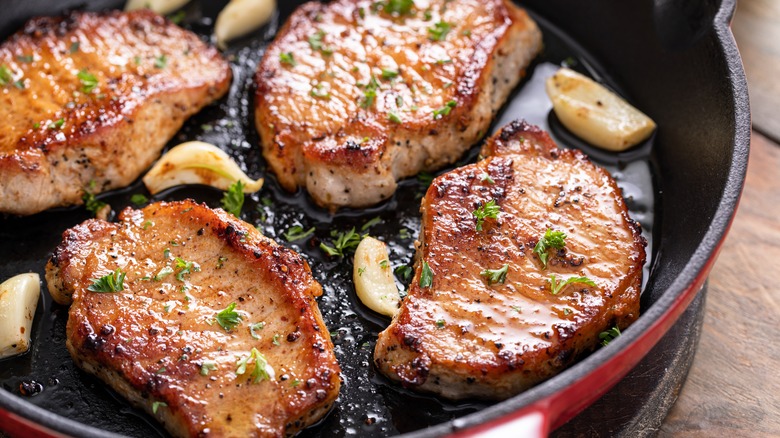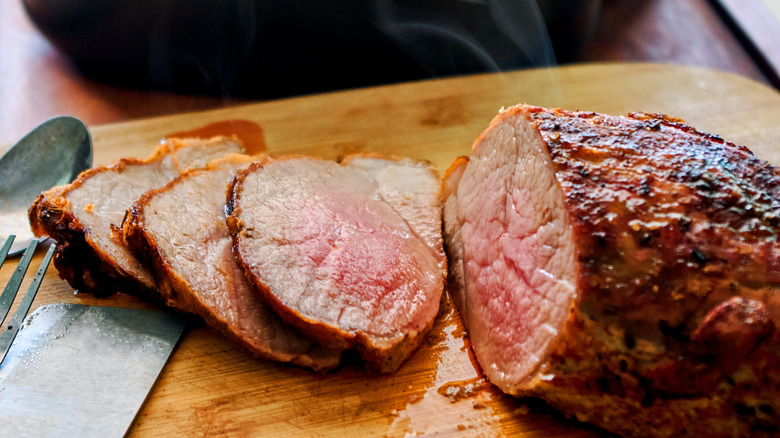The Best Way To Try Out Medium-Rare Pork If You're Used To Well-Done
Of all the popular meats to choose from, none have been done wrong by bad information quite like pork. Safety regulations are, of course, well intentioned and necessary most of the time. But sometimes, through either incomplete information or an overabundance of caution, they just get things wrong. One of the big ones is about the best temperatures to cook pork. For years trichinosis, a disease connected to roundworms, was a major concern when cooking pork in the past, and that led to stringent guidelines to make sure pork was cooked to a high internal temperature of 160 degrees Fahrenheit to kill bacteria. Anyone who grew up prior to the 2000s primarily knew pork chops and other cuts as things that were always cooked within an inch of their life, with that dry, tough meat just being the price of safety.
The truth? Trichinosis is actually very rare, and the USDA itself lowered the recommended pork temperature to 145 degrees Fahrenheit back in 2011, but not everybody noticed. So you may have never tasted the beauty of medium-rare pork, and you may not know what it should look or taste like. So while it's very safe, it's best to ease into more rare pork. You don't have to go from fully brown to rosy pink in one shot, and honestly, you probably won't like fully rare pork, since the texture can be overly chewy and unpleasant. So start off with a medium-well pork chop, and go from there.
Take small steps towards a more rosy piece of pork
Working your way down the well-done-to-rare scale is also good because it will eventually take you out of even the new USDA temperature guidelines. Pork hits medium-well around 150 degrees Fahrenheit, but you need to drop below the recommended 145 degrees Fahrenheit down to just 140 degrees Fahrenheit for medium-rare. It's important to remember that the guidelines aren't set in stone, they are the result of a government agency whose primary concern is stopping people from getting sick at all costs. Trichinosis is actually killed at 137 degrees Fahrenheit, so a medium-rare pork chop should be fine.
But cutting it that close can understandably scare people off. Pork also carries a risk of other bacteria like Salmonella and Listeria, but the chance of getting sick is not any higher than common foods like sushi or runny eggs. The reality is that lots of common foods will always carry a small risk of getting sick, pork just got a bad rap.
The benefits of medium-rare pork are clear. Pork isn't as marbled with fat as steak, so it has a tendency to dry out, which is only worsened by overcooking. And contrary to the "other white meat" marketing, pork is actually a red meat, and medium-rare versions will have a much more steak-like flavor, at a fraction of the cost. So give your favorite pork recipes a chance, and try cooking it just a little less next time.

